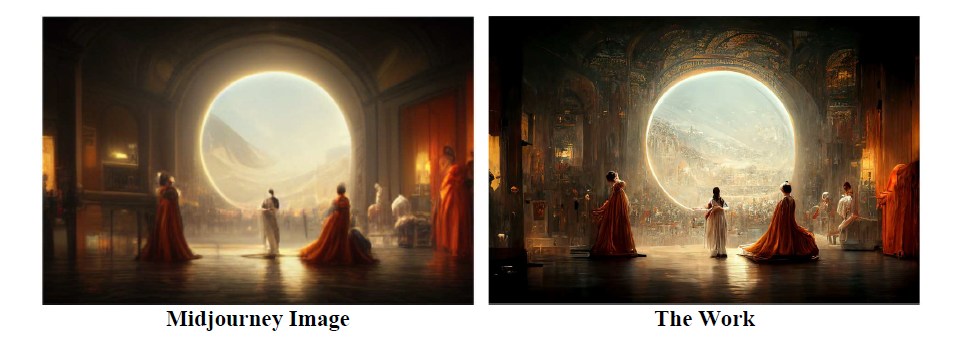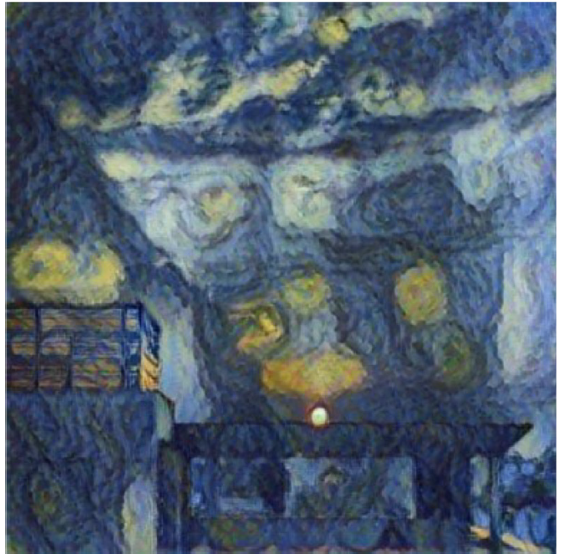The U.S. Copyright Office’s Position on the Copyrightability of Works Made with the Assistance of Generative AI (Part Two)
Summer Associate Ben Gitzinger also contributed to this article.
1. The Copyright Registration Guidance
Copyright Registration Guidance on the Requirement for Human Authorship
The Guidance states that the Copyright Office’s long-standing position is that human authorship is required for a work to be copyrightable and eligible for registration. Nevertheless, the Guidance provides that works created with the help of technological tools—including AI technology—may be copyrightable and eligible for registration, provided that a “human had creative control over the work’s expression.”1If, for example, an AI technology generates a work in response to a human prompt, and “the AI technology determines the expressive elements of its output, the generated material is not the product of human authorship . . . [and therefore] not protected by copyright.” However, if a human “select[s] or arrange[s] AI-generated material” or “modif[ies] material originally generated by AI technology,” those human-authored aspects may be copyrightable and registrable provided that they are sufficiently creative. The Guidance acknowledges that the Copyright Office’s determination of copyrightability and registrability “is necessarily a case-by-case inquiry,” which depends on “how the AI tool operates [i.e., how it interprets prompts and generates material] and how it was used to create the final work.”2
Copyright Registration Guidance on Submitting Applications for Works Including AI-Generated Content
The Guidance requires applicants seeking to register works containing AI-generated content to specify in the copyright application which aspects are human-generated and disclaim AI-generated aspects. For example, if an applicant wishes to register a graphic novel that contains human-authored text and AI-generated illustrations, the applicant may claim authorship in the text but not in illustrations; illustrations must be disclaimed in the “Limitations of the Claim” section of the application. Further, the applicant should not list the AI technology or company that provided the AI technology as an author or co-author in the application. An applicant who does not have the benefit of legal counsel to help fill out a copyright application may simply include a statement in the application that the work contains AI-generated material, and the Copyright Office will contact the applicant to determine the appropriate authorship claims and disclaimers.
Copyright Registration Guidance on Correcting Pending or Registered Applications for Works Including AI-Generated Content
For applications for works including AI-generated content that are pending examination before the Copyright Office, the Guidance requires that applicants call the Copyright Office’s Public Information Office (1-877-476-0778) to inform the Copyright Office about the AI-generated aspects of the works. For already registered works, applicants should submit a supplementary registration application to correct the information in the original copyright registration. The supplementary registration application should describe which aspects of the works are human-authored and disclaim the AI-generated aspects.
2. Implications of the Guidance on Copyrightability and Registrability of Works Including AI-Generated Content
Following the issuance of the Guidance, the Board issued two decisions on works containing AI-generated content: “Théâtre D’opéra Spatial” and “SURYAST.”
In “Théâtre D’opéra Spatial,” creator Jason Allen attempted to register an image that included elements that were generated using Midjourney. Employing an iterative process similar to the one that Kashtanova used to arrive at the final images in “Zarya of the Dawn,” Allen had tested and revised the language of the prompt-input entered into the AI platform over 624 times before finally arriving at an image that he was satisfied with. That image is pictured on the left below. Using Adobe Photoshop, he then modified the image, resulting in the final product that he attempted to register. That image is pictured on the right below.3

The Copyright Office denied Allen copyright protection in the image, and the Board affirmed. The Board’s decision explained that mere refinement of prompt commands cannot result in copyrightable authorship of the resulting image because the “traditional elements of authorship are determined and executed by the technology—not the human user.”4To the extent that Allen later modified visual output from Midjourney, the Board “agree[d] that human-authored modifications of AI-generated material may [be] protected by copyright.”5However, because Allen had refused to disclaim the elements of the work that had been generated using AI, the Board did not reach a determination of what elements in the image could be attributed to Allen and warrant copyrightability.6
The most recent Board decision in “SURYAST” concerned the AI-based tool RAGHAV. RAGHAV allows the user to input a “style image” to “teach” the software a specific artistic style, then input another image to which the taught style will be applied. Using RAGHAV, Photographer Ankit Sahni inputted Van Gogh’s Starry Night painting as the style image, an original photo that he had personally taken as the base image, and a “variable value determining the amount of style transfer.”7Sahni applied to register the resulting image, “SURYAST,” which is a combination of his original picture with the stylistic elements from the Van Gogh painting. The resulting image is shown below.

The copyright application listed Sahni as the author of “photograph, 2-D artwork” and “RAGHAV Artificial Intelligence Painting App” as the author of “2-D artwork.”8Although Sahni’s original photo was essential to the creation of SURYAST, the Copyright Office denied it copyright protection. The Board affirmed the Copyright Office’s refusal to register because “the expressive elements of pictorial authorship were not provided by Mr. Sahni.”9According to the Board, “Mr. Sahni did not control where [certain] elements would be placed, whether they would appear in the output, and what colors would be applied to them—RAGHAV did.”10The Board noted, however, that Sahni could apply to register his original photo with the Copyright Office.
While the Board’s decision in “Zarya of the Dawn” shows that the use of AI does not necessarily preclude copyright protection for a work in the U.S., the Guidance and recent Board decisions illustrate the importance of human contribution to the expressive elements of a work to a finding in favor of copyright protection. The Board’s decisions in “A Recent Entrance to Paradise,” “Théâtre D’opéra Spatial,” and “SURYAST” confirm that the U.S. Copyright Office will not register works that list AI as an author or co-author. This position differs from the Indian Copyright Office, which registered the “SURYAST” work in 2021, recognizing the AI-based tool RAGHAV as a co-author of the work.11Therefore, to improve the copyrightability and registrability of a work containing AI-generated content in the U.S., creators should be mindful of the effects of AI generation on the copyrightability of their works, strive to incorporate expressive elements originating from a human author, and document those human-originated elements.
[1] Copyright Registration Guidance: Works Containing Material Generated by Artificial Intelligence, 88 Fed. Reg. 16190, 16193 (Mar. 16, 2023) [hereinafter Guidance].
[2] Guidance at 16192.
[3] Second Request for Reconsideration for Refusal to Register Théâtre D’opéra Spatial (SR # 1-11743923581; Correspondence ID: 1-5T5320R), at 6 (U.S. Copyright Off. Rev. Bd. Sept. 5, 2023) (refusal affirmed), https://www.copyright.gov/rulings-filings/review-board/docs/Theatre-Dopera-Spatial.pdf
[4] Id. at 7 (quoting Guidance at 16192).
[5] Id. at 8.
[6] Id. (“[T]he Office cannot register Mr. Allen’s human contributions if he does not limit his claim with respect to the AI-generated material.”)
[7] Second Request for Reconsideration for Refusal to Register SURYAST (SR # 1-11016599571; Correspondence ID: 1-5PR2XKJ), at 2 (U.S. Copyright Off. Rev. Bd. Dec. 11, 2023) (refusal affirmed), https://www.copyright.gov/rulings-filings/review-board/docs/SURYAST.pdf
[8] Id.
[9] Id. at 7.
[10] Id.
[11] Sukanya Sarkar, Exclusive: India recognizes AI as co-author of copyrighted artwork, ManagingIP, (Aug. 5, 2021), https://www.managingip.com/article/2a5czmpwixyj23wyqct1c/exclusive-india-recognises-ai-as-co-author-of-copyrighted-artwork